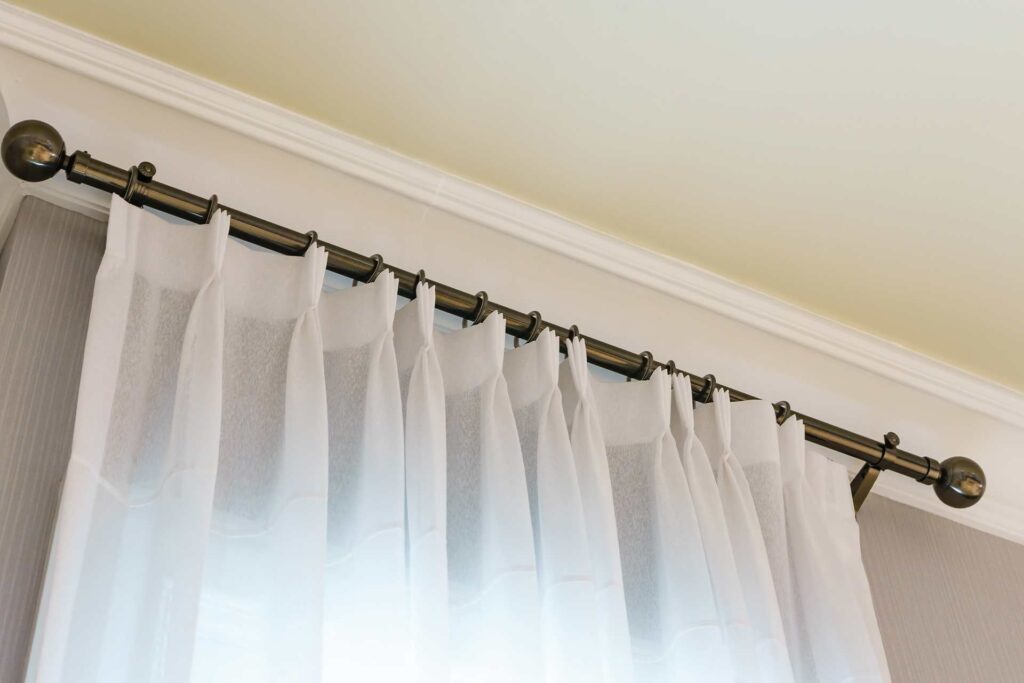How to fix you drapes? Are your drapes looking a little worse for wear? Don’t worry, repairing them doesn’t have to be a daunting task! Whether your drapes have a tear, loose seam, or broken hardware, with the right tools and know-how, you can easily restore them to their former glory. In this comprehensive guide, we’ll walk you through the steps to fix your drapes, from assessing the issue to cleaning and maintenance tips. Let’s get started!
Assess the Issue
Before diving into the repair process, take a moment to assess the extent of the damage to your drapes. Are there tears or holes that need mending? Are the seams loose or coming apart? Is the hardware, such as rods or hooks, in need of repair or replacement? By identifying the specific issues, you can plan out the necessary repairs and gather the right tools.
Gathering the Tools
To effectively repair your drapes, you’ll need a few essential tools and materials. Here’s a list of items you may need:
- Sewing kit with needles, thread, and scissors
- Iron and ironing board
- Fabric glue or adhesive tape
- Replacement hardware (rods, hooks, etc.)
- Ladder or step stool
- Fabric patches or scraps (for tears and holes)
- Cleaning solution or fabric-friendly detergent Now that you have your tools ready, let’s dive into the step-by-step process of fixing your drapes.
Step-by-Step Drapery Repair
Inspect the Damage
Begin by closely examining your drapes for any signs of damage. Look for tears, holes, loose seams, or broken hardware. Make a note of each issue that needs attention so you can tackle them one by one.
Taking Down the Drapes
Before starting any repairs, it’s essential to take down the drapes and lay them flat on a clean surface. This will make the repair process easier and ensure that you have full access to the damaged areas.
Repairing Tears and Holes
If your drapes have tears or holes, don’t worry – they can be easily fixed. First, clean the area around the damage to remove any dirt or debris. Then, carefully sew up the tear using a matching thread color. For larger holes, you can patch them up by using a fabric scrap or patch. Iron the repaired area to ensure a seamless finish.
Fixing Loose Seams
Loose seams are a common issue with drapes, especially along the hems or edges. To fix this, carefully resew the seam using a matching thread color and a tight stitch. Make sure to secure the seam properly to prevent it from coming apart again.
Reattaching Hardware
If your drapery hardware, such as rods or hooks, is broken or coming loose, it’s essential to address this issue promptly. Replace any damaged hardware with new ones and ensure they are securely attached to the wall or window frame. This will help prevent accidents and ensure your drapes hang properly.
Cleaning and Maintenance
Once you’ve completed the necessary repairs, give your drapes a thorough cleaning to freshen them up. Follow the manufacturer’s instructions for cleaning or use a fabric-friendly detergent to wash them. Proper maintenance, such as regular cleaning and gentle handling, can help extend the life of your drapes.
FAQs
How do I fix a broken drapery rod?
If your drapery rod is broken, you can easily replace it with a new one. Measure the width of your window and purchase a rod that fits. Remove the old rod and hardware, then install the new rod according to the manufacturer’s instructions.
Can I repair water-damaged drapes?
Water-damaged drapes can sometimes be salvaged depending on the extent of the damage. If the fabric is moldy or severely water-damaged, it may be best to replace the drapes. For minor water damage, you can try spot-cleaning or washing the drapes according to the care instructions.
What should I do if my drapes are too long?
If your drapes are too long, you can hem them to the desired length. Measure how much you need to shorten them, then fold and sew the hems to the correct length. Iron the hems for a neat finish.
How do I mend sun-faded drapes?
Sun-faded drapes can be challenging to repair, as the color may be permanently faded. To prevent further fading, avoid direct sunlight exposure by using sheer curtains or blinds. If the fading is minimal, you can try dyeing the drapes to restore the color.
Is it possible to reline drapes at home?
Reline drapes can be a complex task best left to professionals. However, if you have basic sewing skills, you can attempt to reline drapes at home. Purchase a lining fabric that matches the original, then carefully detach and replace the lining following a sewing pattern.
Should I repair or replace damaged drapes?
The decision to repair or replace damaged drapes depends on the extent of the damage and your budget. Minor tears, loose seams, or hardware issues can be easily repaired at home. However, if the damage is significant or the drapes are old, it may be more cost-effective to replace them.
Conclusion
In conclusion, knowing how to fix you drapes is a valuable skill that can help you extend the life of your window treatments and save money on replacements. By following the step-by-step guide outlined in this article, you can confidently tackle common drapery repair issues such as tears, holes, loose seams, and broken hardware. Remember to assess the damage, gather the necessary tools, and take your time to make the necessary repairs. With a little patience and effort, your drapes will be looking as good as new in no time!



